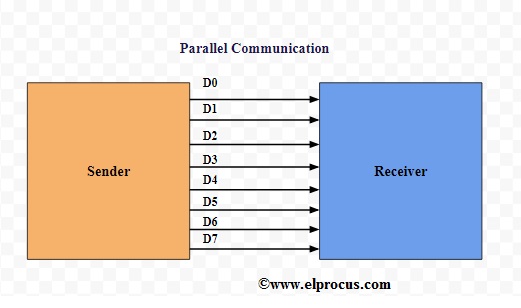Advantages Of Serial Communication Over Parallel Communication

EEL201 Term Paper: Serial Communication Over Parallel used for providing better isolation of the channel from the surroundings [13]. Crosstalk Crosstalk creates interference between the parallel lines, and this effect worsens as the length of the communication channel increases. Jun 20, 2002 - Flexibility of serial links in communication system design. Serial links offer significant flexibility over parallel buses in terms of the media used.
• • • • • A few weeks ago, we published an article, about, and how data was transferred from a storage space to a machine; we will focus today on the methods of transmission of this data. For each and every data transfer, there is one truth: the emitter and the receiver have to use the same protocol. It allows them to have the same level of information and to know the transfer speed of the data, the signals announcing the beginning and the end of the communication, as well as the method used to check the integrity of the received data. There are numerous protocols, which we developped in our aforementionned article. However, all protocols rely on two transmission methods: parallel transmission and serial transmission. In this article, discover the differences between these two methods in terms of concept and use! Bits Before getting into the heart of the matter, let us have a quick “vocabulary break” and focus on bits.
A bit is the smallest unit used to code data, and it can take only two values: 0 or 1. Let us take ASCII code as an example. It enables to code a character with a byte (a byte is equal to 8 bits). The letter A, in this case, is written 01000001 in ASCII code, or: Bit 1: 0 Bit 2: 1 Bit 3: 0 Bit 4: 0 Bit 5: 0 Bit 6: 0 Bit 7: 0 Bit 8: 1 A three-letter word, such as “cat”, is thus coded with three bytes, thus 3×8 = 24 bits, etc. The two data transmission methods we expose in this article are acting at the bit level. Parallel transmission This data transmission method consists in sending bits between an emitter and a receiver on several lines, simultaneously.
For instance, by associating 8 buses (cables) and transmitting 1 bit per bus at the same time, one has the opportunity to go 8 times faster as by progressively sending the data: it is the biggest advantage of this method. Moreover, it can easily be implemented on a machine, since creating a parallel port to receive the additional buses is very easy.
Its drawback is its price: having several cables is much more expensive than having only one, whic makes sense! It is however possible to make parallel data transmission through only one physical line, by dividing the bandwidth into several underlying lanes.
Main use Parallel transmission can be used for data transfer on a short distance, for instance between components of a machine (PCI protocol). However, for great distances, serial transmission is preferred: using parallel transmission would require too much equipment. Tekst anglijskij dlya stroitelej. Moreover, the longer the cable, the bigger the probability to experience crosstalk: it is a phenomenon of electromagnetic induction where the signal transmitted by one cable creates an interference with a signal on another cable.
Serial transmission This data transmission method consists in sending succeeding bits through a single bus, between an emitter and a receiver. These bits thus reach the receiver one after the other, which can take time depending on the quantity of data to be sent. In order to know when the transmission starts and when it ends, the sent data is organized in threads. A thread is made of a header, of data to transmit, and of a trailer (indicating the end of the transmission). There are two serial transmission methods for these threads: Synchronous transmission The emitter and the receiver are adjusted on the same clock, thanks to a synchronisation signal (a signal indicating the moment where the receiver can read data), for the reading frequency to match the sending frequency.

Without this, the receiver is likely to read only one out of two bits, for instance, if its reading frequency is twice as slow as the receiving frequency. For that, there are two solutions: either the signal is regular, in which case the receiver will synchronize its internal clock to the emmiter’s frequency, or it is not. In the later case, the synchonisation signal is sent through a second bus, whose goal is thus to synchronize transmissions, placed in parallel of the bus transmitting the data.